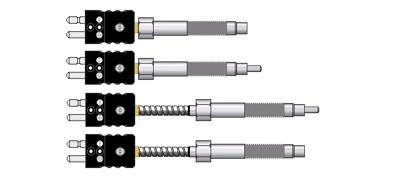
Have you ever wondered what keeps your oven, water heater, or home heating system running at just the right temperature? At the heart of these devices lies a small, powerful tool called a thermocouple. In this article, we'll uncover the fascinating workings of thermocouples, their types, and where you can find them in your daily life.
A thermocouple is a temperature sensor. It's made up of two different types of metal wires that are connected at one end. When the connected end (known as the junction) is heated or cooled, it creates a temperature difference between the two ends of the wires. This difference is the magic key that makes a thermocouple work.
The Seebeck effect is the star of the show when it comes to thermocouples. Named after the German physicist Thomas Seebeck discovered it, the effect explains how a temperature difference between the two ends of the thermocouple creates a small voltage.
Let's simplify this: imagine a crowd of people (think of these as electrons) at a summer fair. If it gets too hot, the group will move towards a cooler area, like a shaded spot or an air-conditioned tent. This is similar to what happens inside a thermocouple: the "heat crowd" of electrons moves from the hot area to the cooler one, creating an electric current.
Now, how does this electric current help measure temperature? Here's a step-by-step breakdown:
Thermocouples come in various types, denoted by letters: J, K, T, E, N, S, R, and B. Each type uses different metal combinations and is designed to work best within specific temperature ranges and environments. For instance, Type K thermocouples are commonly found in home appliances as they handle moderate temperature ranges well. Meanwhile, Type S thermocouples, made from costly platinum alloys, are used for very high-temperature applications, such as in kilns and industrial sites.
You can find thermocouples hard at work in many places. For example, they keep your oven at the correct baking temperature, help your water heater deliver that perfect hot shower, and ensure your home stays cozy through a smart thermostat in your heating system. In all these cases, the thermocouple measures temperature changes and helps the device adjust to keep things running smoothly.
Thermocouples may be small, but vital in many of our everyday appliances and systems. Their ability to convert temperature changes into electrical current and precise temperature measurements is a remarkable example of physics at work. So, the next time you bake a cake or enjoy a warm shower, remember the mighty thermocouple working behind the scenes. Dive deeper into physics and discover more fascinating concepts that make everyday life convenient and comfortable.